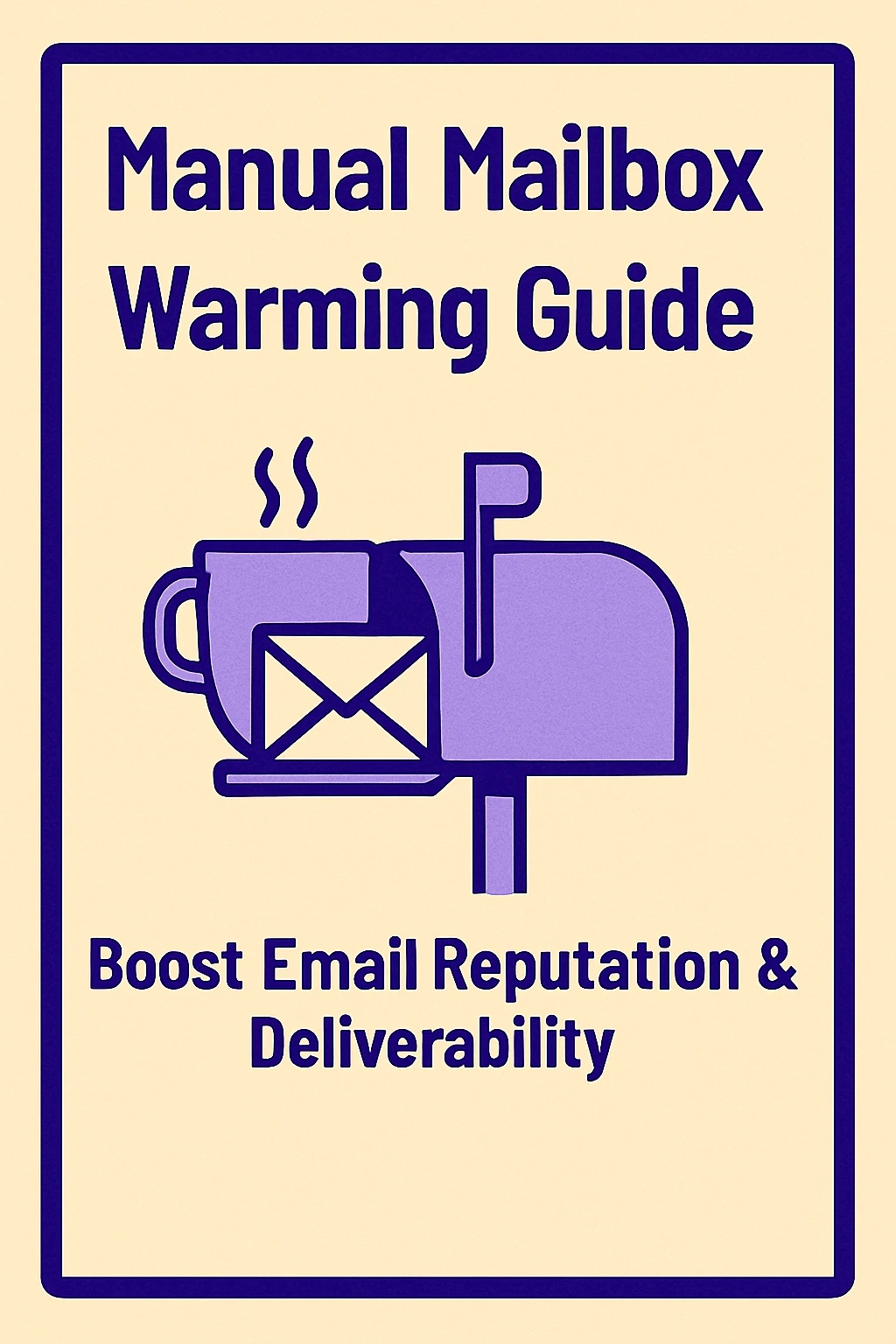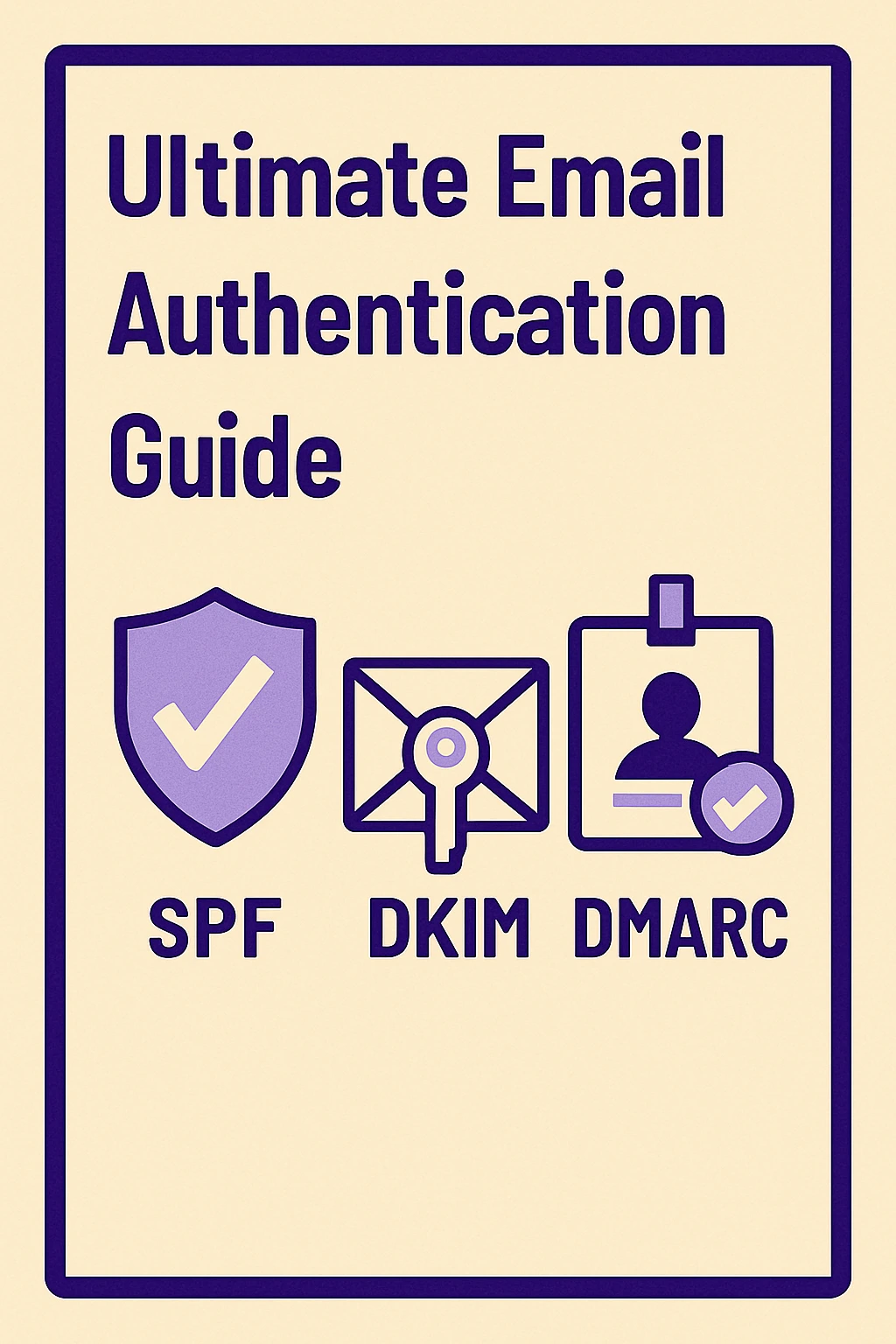Email Prospecting 2025: Boost Sales with Proven Infrastructure
In 2025, email prospecting isn’t just about sending messages—it’s about ensuring they actually land in the inbox. This blog dives deep into why email infrastructure is now the backbone of successful sales outreach. We explore the critical elements that impact deliverability, from domain health to warm-up tools, and how poor infrastructure can quietly kill your cold outreach. You’ll discover the top email infrastructure tools like MailKarma.ai, InfraForge, Mailreef, Mission Inbox, and Brevo, each designed to improve visibility, delivery, and replies. We also break down common mistakes that derail prospecting campaigns and share practical, real-world tips to help your team build a high-performing email stack. Whether you’re running small outreach sequences or scaling massive campaigns, this guide shows you how to boost sales by making sure your emails reach the people who matter. By the end, you’ll understand exactly how to turn email infrastructure into your secret sales advantage in 2025.
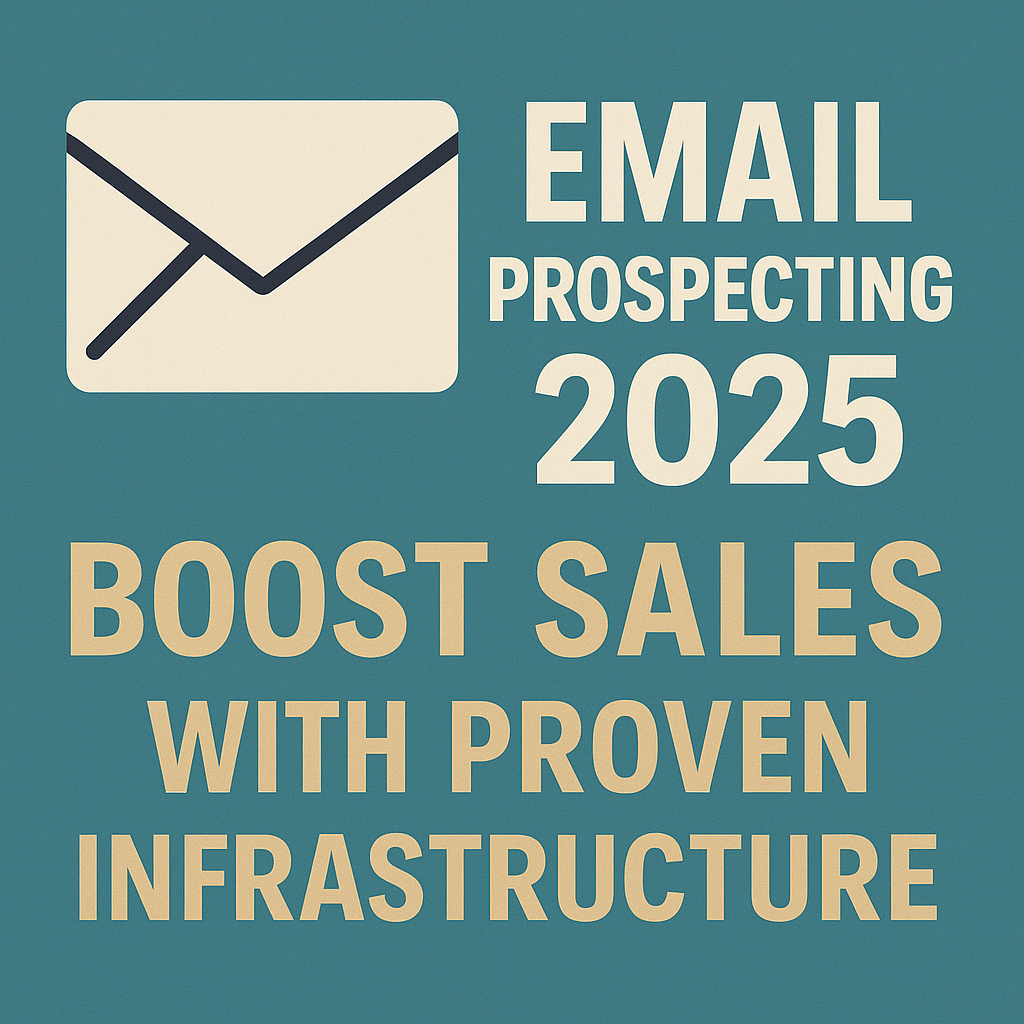
In Email Prospecting 2025, what separates a closed deal from a lost opportunity often happens long before a prospect even opens your message. It’s not just about writing the perfect line or segmenting your audience.
It's about whether your email ever lands in the inbox.
Let’s face it—without proper email infrastructure, your best efforts are wasted. The truth? Most sales teams are flying blind, sending emails without understanding the systems that get them delivered.
But this year, the game is changing. Infrastructure isn’t just for the IT department anymore. It’s a front-line sales tool.
Why Email Prospecting Still Matters in 2025
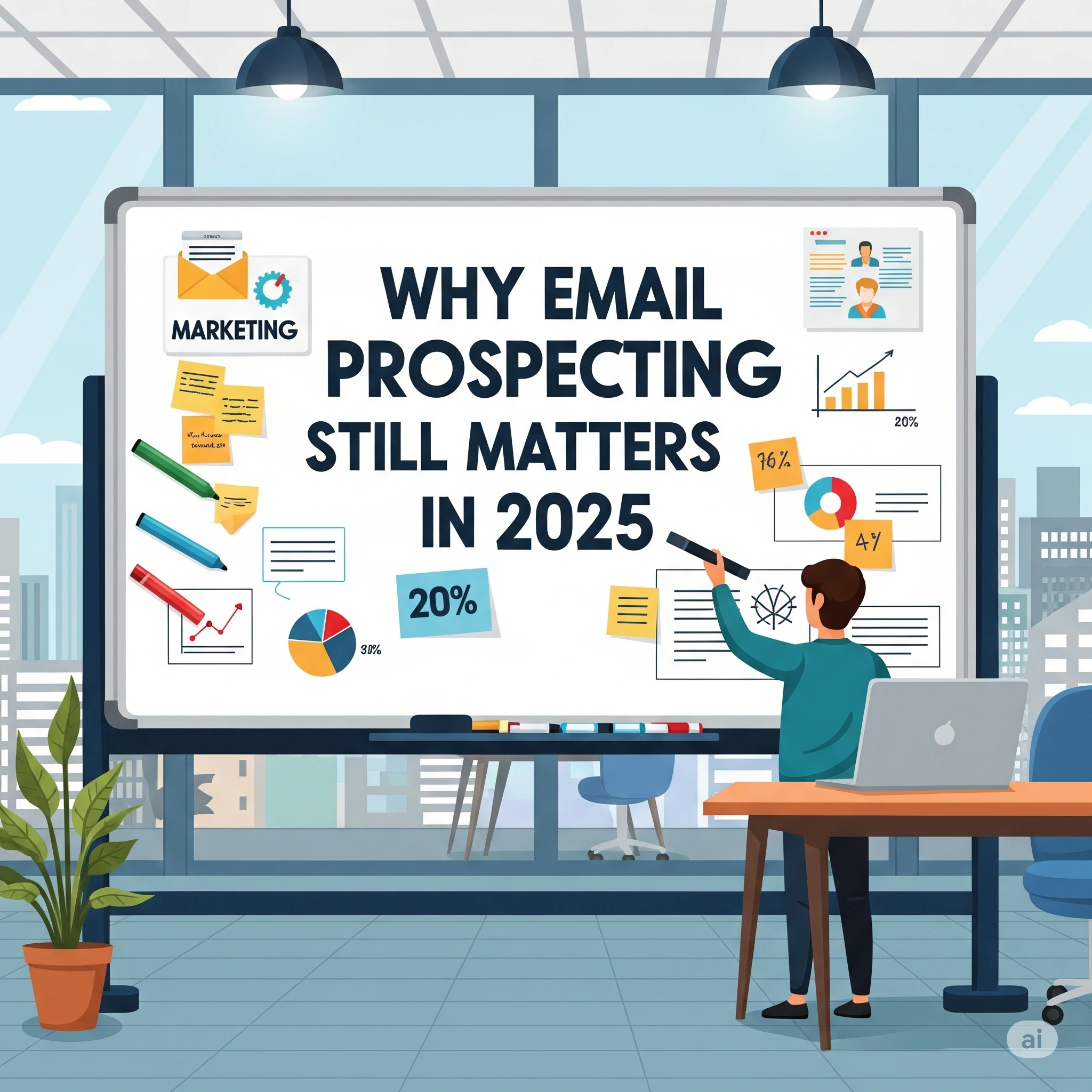
A Crowded Inbox, A Clear Opportunity
A crowded inbox might seem like a dead end—but it’s actually your clearest shot at starting real conversations. Despite the noise, email remains the most trusted, direct, and professional channel for outreach. In a landscape overwhelmed by ads and distractions, cold email is still where people slow down, read, and occasionally respond. But here’s the catch: none of that matters if your message doesn’t land in the inbox. Success starts with deliverability—because before you can earn a click, you have to earn a spot in the inbox.
The Value of 1:1 Conversations at Scale
When you send a cold email, it shouldn’t feel like marketing—it should feel like a real person reaching out to help.
That’s the magic of email outreach. It lets you have hundreds of conversations a day, without losing the human touch. But that magic disappears fast if your emails are flagged as spam or bounce back.
Email vs LinkedIn vs SMS: Why Email Still Drives B2B Results
LinkedIn works until it doesn’t. SMS feels personal, but risky. But email? Email is still king, especially for B2B.
Why? It’s scalable, direct, and proven. It lands in a place where decisions are made. And when you pair strong messaging with solid cold email infrastructure, it becomes your most powerful sales channel.
The Rise of Email Infrastructure in Sales
How Email Delivery Systems Affect Sales Performance
There’s a hidden layer beneath every email you send, one that most people don’t see but which makes all the difference. Your sending domain, IP health, throttling settings, and authentication protocols work together behind the scenes to determine whether your message reaches its intended recipient. If any of these components is misconfigured, your email might never land in the inbox. What’s frustrating is that many sales teams don’t even realize the real issue. They point fingers at the message, timing, or list when, in reality, the problem lies deeper—in the infrastructure itself. Understanding and optimizing this invisible layer is the key to boosting campaign performance..
Poor Infrastructure = Lost Leads
Let’s break it down. You’re sending outreach campaigns to 1,000 targeted leads, but 400 of them never even see your email. Maybe it ended up in spam. Maybe it bounced. Or maybe your domain got flagged. That’s 400 opportunities lost—simply because your backend wasn’t properly set up. In today’s landscape, strong email infrastructure isn’t a nice-to-have—it’s absolutely essential. Without it, even the best-crafted campaigns can fail before they ever have a chance to succeed.
Core Pillars of Email Infrastructure for Prospecting
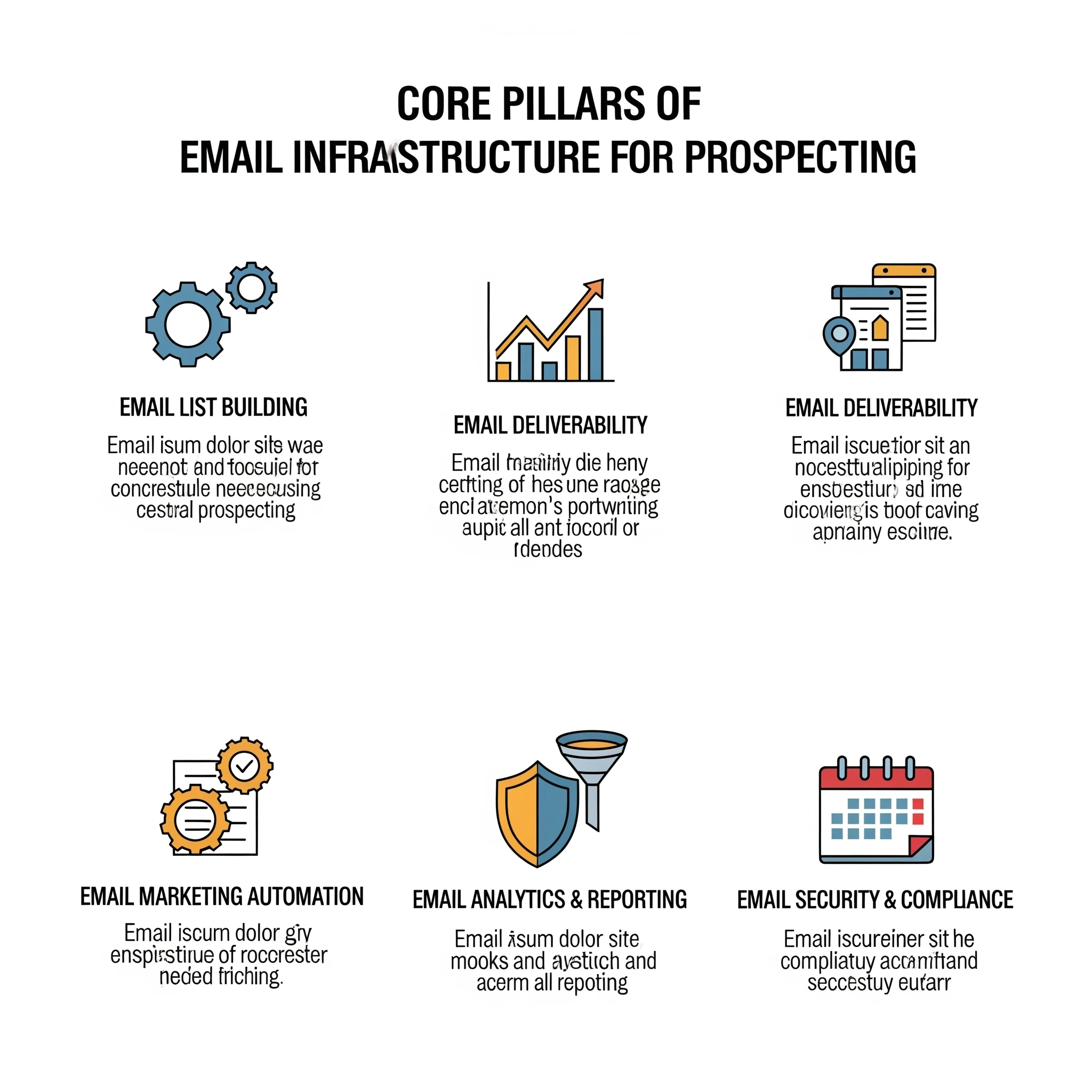
Deliverability as a Dealbreaker
You can’t close deals if your message never gets seen. That’s why deliverability isn’t a nice-to-have—it’s the core metric that drives everything else.
Here’s how to improve it:
- Use email verification tools to avoid bad addresses.
- Warm up new domains slowly.
- Control sending pace with email throttling for prospecting.
- Clean your lists often.
- Test your inbox placement regularly.
Importance of Warm-Up and Throttling
Ever wonder why new domains often get flagged? It’s because inbox providers don’t trust fresh senders right away. They need to see consistency and engagement before allowing your emails to reach the inbox. This is where email warm-up tools come in—they gradually build your sender reputation by sending a small volume of emails and steadily increasing it over time. As for throttling, it helps you avoid triggering spam filters by controlling how much you send, and at what pace. By sending too much, too soon, you risk being marked as suspicious. Both warm-up and throttling are vital to building a trustworthy email sender reputation.
Authentication Protocols Matter
Without proper authentication, like SPF, DKIM, and DMARC, your emails are more likely to be flagged as spam or even blocked altogether. These protocols verify that your email is really coming from you, and they protect your domain from impersonation. In 2025, authentication is a non-negotiable part of ensuring deliverability and protecting your reputation.
Don’t ignore the boring stuff. SPF, DKIM, and DMARC setups are more than technical jargon—they’re trust signals.
Without them, email servers can’t confirm who you are. That means your emails are more likely to get blocked or dumped into junk folders.
IP Reputation and Domain Health
Your IP reputation and domain health are the cornerstones of email deliverability. These factors determine whether your emails reach the inbox or get stuck in spam folders.
IP Reputation:
Every time you send an email, your IP address is tracked by inbox providers. If you're sending high-quality, engaging emails, your IP gains a positive reputation. But if you’re sending too many bounces, spam reports, or poor-quality content, your IP gets flagged, hurting your chances of reaching the inbox.
Domain Health:
Your domain is equally important. Providers track the history of your sending domain, including how often it’s been used for spam, its engagement rates, and whether authentication protocols (SPF, DKIM, DMARC) are in place. A healthy domain boosts deliverability, while a flagged or blacklisted domain can seriously damage your email campaigns.
In 2025, both IP reputation and domain health require ongoing monitoring and care. Without them, even the best email strategy can falter. Proper setup, consistent engagement, and good list hygiene are key to maintaining a strong reputation and ensuring that your emails get delivered where they belong—right in the inbox.
Think of your domain and IP like your credit score. Bad behavior, even by accident, damages your reputation.
That’s why sender reputation management, blacklist monitoring, and regular SMTP performance checks matter. Keep your domain healthy, and the inbox will welcome you.
MailKarma.ai
A must-have if you’re serious about deliverability.
MailKarma.ai is designed to provide real-time visibility into your email deliverability. It helps you track where your emails land—Inbox, Spam, or Promotions—before you even hit send. This proactive approach ensures that you are always on top of your sender reputation, guiding you to adjust your email campaigns before problems arise. Whether you're a marketer or a sales team, MailKarma.ai offers crucial insights to boost engagement and reduce bounces.
Features:
- Real-Time Inbox Placement Monitoring: See exactly where your emails will land (Inbox, Spam, or Promotions) before sending.
- Reputation Scoring that Guides Outreach: Get insights into your sender score, domain health, and reputation signals to help you adjust and improve outreach.
- Spam Trap Detection: Identify potential spam traps and avoid blacklisting.
- Bounce Type Categorization: Quickly diagnose and categorize hard and soft bounces to ensure list hygiene.
- Detailed Reporting & Alerts: Get detailed reports and alerts to act fast on any deliverability issues.
Best For:
Performance-focused senders, growth marketers, and teams running high-stakes or time-sensitive campaigns that need to ensure emails land in the right place.
InfraForge
Built for modern sales teams, not just tech teams.
InfraForge offers advanced email infrastructure with tools designed to help you control your sending speed, warm up your domain, and ensure proper email authentication. It is particularly useful for scaling campaigns and optimizing delivery rates over time, offering real-time diagnostics and helping sales teams stay aligned with deliverability goals.
Features:
- Smart Throttling + Authentication Support: Helps control your sending speed, warm up IP addresses, and configure SPF, DKIM, and DMARC authentication.
- Real-Time Diagnostics: Provides visibility into deliverability issues and enables both marketing and ops teams to align on solutions.
- Campaign Performance Insights: Delivers insights into how campaigns are performing based on sending practices.
Best For:
Sales teams, SaaS platforms, and developers needing robust email infrastructure to scale operations and maintain optimal deliverability.
Mailreef
Perfect for teams running at scale.
Mailreef is designed for high-volume campaigns, offering deep SMTP monitoring, uptime tracking, and bounce intelligence to maintain a clean sender reputation. It’s a go-to tool for sales teams and marketers who need to ensure consistent email delivery while handling large lists.
Features:
- Deep SMTP Monitoring + Uptime Tracking: Tracks the performance of your email server 24/7 to ensure consistent delivery.
- Bounce Intelligence for High-Volume Campaigns: Identifies why emails bounce and provides insights into patterns to avoid damaging your sender reputation.
- Real-Time Bounce Reports: Quick access to information on bounce types, allowing for quick fixes.
Best For:
High-volume senders, eCommerce brands, and agencies focused on maintaining healthy email lists and tracking performance at scale.
Mission Inbox
Focused on one thing: deliverability insights.
Mission Inbox specializes in helping businesses track and improve their email deliverability. It provides daily benchmarks, detailed testing insights for spam and promotions folder placement, and action steps for improving inbox delivery.
Features:
- Daily Deliverability Benchmarks: Track your domain’s performance across all major inbox providers, including Gmail, Yahoo, and Outlook.
- Inbox/Spam/Promotions Folder Testing: Offers detailed testing insights to help adjust copy, sender names, and subject lines for better inbox placement.
- Actionable Deliverability Reports: Simplified reports that guide adjustments to ensure emails land where they’re intended.
Best For:
Startups, smaller teams, or anyone new to email deliverability who needs clear, actionable insights to improve campaign performance.
Brevo (for hybrid CRM + prospecting)
If you want all-in-one simplicity, Brevo’s a great option.
Brevo offers a powerful combination of CRM and email marketing tools designed to streamline campaigns and deliverability. It’s ideal for sales teams who need to manage prospecting and outreach in one platform while ensuring email performance remains top-notch.
Features:
- Email Campaign Builder with Deliverability Tools: Build campaigns and test email delivery from a single platform.
- Built-in List Hygiene Features: Automatically keep your database clean, active, and compliant with GDPR and other regulations.
- CRM Integrations: Seamlessly integrates with your CRM to help you automate email outreach and track engagement.
Best For:
Sales teams, SMBs, and marketers who need an all-in-one platform for both email campaigns and CRM management, with a focus on ease of use and deliverability.
These tools are essential for optimizing email performance, maintaining healthy sender reputations, and scaling sales prospecting efforts efficiently in 2025. Whether you need monitoring, warm-up, or advanced diagnostic tools, these platforms provide all the insights and automation needed to improve your email deliverability.
Smart Tips to Improve Email Prospecting Performance in 2025
Verify Every Lead Before You Hit Send
Bounces damage your domain and lower your inbox score. Always use verification to clean your list before sending.
Warm Up New Domains & IPs
A cold sender domain is a red flag. Slowly increase sending volume with warm-up tools to stay trusted.
Test Deliverability Across Segments
Don’t just guess. Test your emails with multiple inboxes—Gmail, Outlook, Yahoo—and see where they land.
Monitor Engagement, Not Just Delivery
Getting delivered is great, but getting replies is better. Watch opens, clicks, and responses. Adjust based on behavior.
Common Infrastructure Mistakes That Sabotage Sales Prospecting
Overlooking Domain Setup (SPF/DKIM/DMARC)
Skipping these steps is like sending anonymous letters. Without proper SPF, DKIM, and DMARC configurations, mail servers have no way of verifying that your emails are legitimate. This leaves your messages vulnerable to being flagged as spam or even blocked. Ensuring your domain setup is properly configured is essential for gaining the trust of inbox providers.
Skipping IP Warm-Up
Going from zero to 1,000 emails overnight is a surefire way to get flagged. IP warm-up is a gradual process where you slowly increase your sending volume over time. Without this, inbox providers will see a sudden surge in traffic from a new IP and assume it’s suspicious, leading to your emails being blocked or delayed. Always warm up your IP to build trust gradually.
Sending Too Fast Without Throttling
Batch your emails. Spread them out. Don’t overwhelm inbox providers. Sending too many emails too quickly can trigger spam filters and get your domain flagged. Throttling helps you control the speed at which your emails go out, ensuring you don’t overwhelm inbox providers and increasing the chances that your emails will be delivered.
Ignoring Feedback Loops and Blacklist Alerts
If your domain gets blacklisted and you don’t know it, you’ll keep sending—and keep failing. Feedback loops and blacklist alerts help you track and react to potential issues. Ignoring them means you might continue sending emails that never reach the inbox, further damaging your reputation. Stay on top of these alerts and address problems quickly to maintain healthy deliverability.
By avoiding these common mistakes and prioritizing infrastructure setup, you'll improve your deliverability, avoid penalties, and ultimately increase your success in sales prospecting.
How to Build a Reliable Email Stack for Prospecting in 2025
Building a reliable email stack for prospecting in 2025 isn’t just about sending out a high volume of emails—it’s about ensuring that every message gets delivered, reaches the right audience, and doesn’t end up in spam. Here’s how you can build an email infrastructure that ensures success:
1. Start with a Clean Domain and Set Up Authentication
Before you send your first email, ensure that your domain is properly set up with SPF, DKIM, and DMARC records. These email authentication protocols tell inbox providers that you’re a trusted sender and help protect your domain from being spoofed. This step is non-negotiable for good deliverability.
2. Use a Trusted Email Service Provider (ESP)
Choose a reputable Email Service Provider (ESP) like Mailgun, SendGrid, or Brevo. These platforms offer high deliverability rates, powerful analytics, and robust infrastructure to handle everything from warm-up to email delivery. Look for an ESP that provides real-time monitoring, campaign optimization, and easy-to-use features for email segmentation and tracking.
3. Warm Up Your IP and Domain
Jumping straight into sending a large volume of emails from a new domain or IP can trigger spam filters. Use an IP warm-up tool or process to gradually increase your sending volume. This builds trust with email servers and prevents your domain from being flagged. Warm-up services like MailWarm can automate this process for you.
4. Implement Throttling to Control Sending Speed
To avoid overwhelming inbox providers and getting flagged as spam, use throttling to control the rate at which your emails are sent. Throttling helps ensure a smooth delivery, especially when sending large volumes. By spreading out your sends, you can minimize the risk of being blocked or deferred.
5. Monitor Deliverability and Use Feedback Loops
Set up deliverability monitoring tools like MailKarma.ai or Mission Inbox to track where your emails land—Inbox, Spam, or Promotions. Feedback loops will alert you when recipients mark your emails as spam, helping you improve your targeting and content. Stay informed about your email health by tracking bounce rates, open rates, and blacklists.
6. Focus on List Hygiene and Segmentation
Constantly clean your email list to remove inactive or invalid addresses. An up-to-date and well-maintained list reduces bounce rates and ensures better engagement. Use list segmentation to send highly targeted messages to specific groups of prospects. This increases the relevance of your outreach, leading to better conversion rates.
7. Implement Testing and Optimization
Regularly test your emails for spam trigger words, broken links, or rendering issues across devices. Tools like Litmus or Email on Acid allow you to preview and optimize how your emails appear in different inboxes. You can also A/B test subject lines, CTAs, and email content to improve engagement over time.
8. Automate Campaigns with Smart Workflows
Leverage automation tools to streamline follow-ups and set up triggered emails based on prospect actions (e.g., open, click, reply). Platforms like Brevo or HubSpot allow you to create seamless automation flows that keep prospects engaged throughout the funnel without manual intervention.
9. Track Performance and Adjust
Use analytics to track the performance of your email campaigns in real time. Look at metrics like open rates, click-through rates, bounce rates, and conversions. Adjust your strategy based on this data to refine your outreach and improve results. Constantly evaluate and optimize your email stack to stay ahead of deliverability issues.
By combining these tools and practices, you can build a strong, reliable email stack that helps you scale your sales prospecting efforts, improve deliverability, and maximize conversions in 2025. The key is to maintain a clean, compliant, and optimized infrastructure while using smart tools to ensure your emails reach the right people, at the right time, with the right message.
Fix your email stack with MailKarma.ai—because when your emails land, your pipeline grows.
Final Thoughts: Infrastructure Is the Hidden Lever in Sales Prospecting
In the fast-paced world of sales prospecting, infrastructure is often the unseen force that drives success. While catchy subject lines and engaging content are important, deliverability is the true game-changer. Without a solid email infrastructure—strong domain setup, IP warm-up, throttling, and continuous monitoring—your outreach efforts can quickly fall flat, no matter how great your message is.
In 2025, sales teams that understand the importance of email infrastructure and invest in the right tools will be the ones who thrive. By ensuring every email reaches its destination, avoids spam filters, and maintains a strong sender reputation, you not only maximize your chances of conversion but also build a reliable, scalable prospecting engine.
Infrastructure isn’t just about sending emails—it’s about sending them with clarity and confidence. When you get your backend right, you’ll find that everything else—engagement, conversions, and sales—falls into place. So, stop guessing and start optimizing. Infrastructure is the hidden lever that will unlock your sales potential in 2025 and beyond.
Quick Recap of Tools
- MailKarma.ai – Helps you land in inboxes and fix your sender reputation.
- InfraForge – Smart throttling and setup support, perfect for non-tech teams.
- Mailreef – Deep server monitoring and bounce analytics.
- Mission Inbox – Benchmarks and testing for inbox placement.
- Brevo – Simple, effective CRM plus campaign builder with hygiene tools.
FAQs
What is email prospecting in 2025?
It’s the process of reaching potential buyers through personalized cold email, powered by smart infrastructure and deliverability tools.
Why is email infrastructure important for cold outreach?
Because even perfect emails go nowhere if your infrastructure is broken. Deliverability depends on sender health, domain setup, and authentication.
Can I prospect without warm-up tools?
Technically, yes—but you risk burning your domain. Warm-up tools protect your reputation and build trust with inbox providers.
How do I know if my prospecting emails are being delivered?
Tools like MailKarma.ai and Mission Inbox help track inbox placement and alert you when something’s wrong.
What are the best infrastructure tools for sales teams?
MailKarma.ai, InfraForge, Mailreef, Mission Inbox, and Brevo are leading the way in helping sales teams control and improve their email delivery.
Recent Blogs
FAQs: Everything You’re Wondering About Cold Email Deliverability & MailKarma’s Infrastructure
MailKarma is a dedicated email infrastructure solution built exclusively for cold email outreach. Unlike shared inbox tools or general ESPs, MailKarma gives you complete control over your sending setup—private US IPs, clean domains, and expert-backed deliverability practices. Built by cold email pros, MailKarma is optimized to scale outreach without landing in spam.
Because MailKarma sets up private infrastructure—including custom domains and mailboxes—it doesn’t offer a traditional free trial. However, you can explore the platform, view your dashboard, and test features before provisioning infrastructure. Our private dedicated email servers cost $150 per server plus $0.001 per email sent, making it extremely cost-effective for high-volume cold email campaigns. For Gmail Workspace solutions, pricing starts at $3.50 per email with a 10-email minimum, dropping to $2.50 per email for volumes over 100 emails. This transparent pricing model ensures you only pay for what you use while maintaining enterprise-grade email deliverability.
Yes. MailKarma automatically sets up SPF, DKIM, and DMARC records using best-in-class standards. No technical hassle—our system handles everything behind the scenes, and our support team is always ready to assist if needed.
Every MailKarma subscription includes:
- Automated DNS setup (SPF, DKIM, DMARC)
- Private mailbox hosting
- Ongoing deliverability optimization
- Server monitoring and uptime guarantees
It depends on your monthly sending volume and the number of contacts per sequence. To simplify this, MailKarma includes a volume-based calculator inside the app to help you choose the optimal setup for scale, safety, and inbox placement.
Gmail and Outlook aren't built for cold outreach—they throttle volume, rotate IPs, and limit deliverability. MailKarma gives you:
- Dedicated infrastructure
- Warmed IPs and aged domains
- No shared resources
- Built-in best practices for cold outreach
It's the infrastructure your outreach actually needs.

.png)
